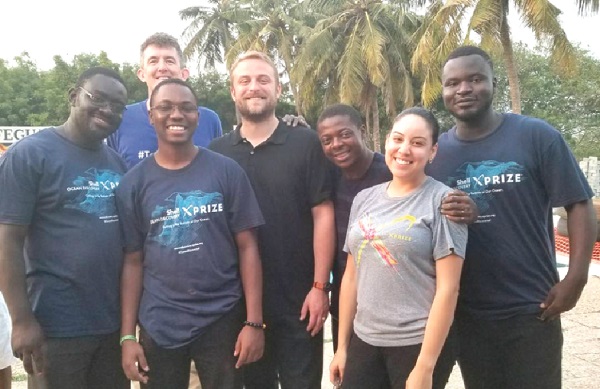
Ghanaian tech experts build robot for oil & gas industry
A team of Ghanaian technology experts are building a special robot from waste material to be used to perform multiple tasks that include obtaining detailed maps of a seafloor before installation of subsea infrastructure such as pipelines.
The robot will also be used underwater to detect and map submerged wrecks, rocks and obstructions that are hazardous to navigation by commercial and recreational vessels.
Advertisement
Known as the Autonomous Underwater Vehicle (AUV), the successful production of the robot is expected to help cut down the cost of subsea infrastructure by offshore oil and gas companies, as well as improve safety at sea and other water bodies.
The leader of the team and a Lecturer at the University of Energy and Natural Resources (UENR), Dr Mark Amo-Boateng, told the GRAPHIC BUSINESS that the model built in Ghana was the X5 AUV.
It is being produced from waste materials, including used up laptop batteries, he said.
He said although the team applied for financial support from the Ghana National Petroleum Corporation (GNPC), it was yet to get feedback.
He said lack of financial support had been a major constraint to the project team and the successful execution of its mission.

The X5 AUV model the team is building is halfway through to completion
With the limited funds, Dr Amo-Boateng said the team had had to improvise to be able to build the robot.
He said the team had to use baby dippers at certain stages to shield the sonar from being soaked with water.
He, therefore, called on the government, corporate bodies and individuals to support the project and other technological projects in the country.
This, he said, will elevate technology in the country to a stage where “we can compete with other technological advanced countries.”
Cost-effectiveness
He explained that the low-cost modular robot would have originally cost US$700,000 if it were to be built from the aluminium-based semi-fuel cells.
He, however, said the decision to build it from waste materials had reduced the cost of production.
He added that the robot would be created with basic materials and technology by the team to democratise ocean discovery, using advanced artificial intelligence and algorithms to navigate and explore the ocean.
Additional Uses
Dr Amo-Boateng told the GRAPHIC BUSINESS that aside serving its purpose as underwater surveillance, the X5 AVU could be used for scientific research in measuring the quality of water.
He added that it could also be used for search and rescue missions in places where it was difficult for human beings to go.
“The human being has a limit to where he can dive to. So, the robot is designed to go beyond where human beings cannot go.
“The X5 AUV is designed to go up to 4,000 feet deep and map an area of 500 square meters in less than a day,” he said.
Mode of design
Dr Amo-Boateng said the X5 AUV, like all other AUVs, conduct their survey missions without an operator’s intervention.
“It returns to a pre-programmed location after it had completed its mission so that the data can be downloaded and processed,” he said.
Unlike the Remotely Operated Vehicle (ROV), which is an unoccupied underwater robot connected to a ship by series of cables, Dr Amo-Boateng said the AUV used a limited number of tasks dictated by the technologies available.
He added that although AUVs were powered by aluminium-based semi-fuel cells, which required substantial maintenance and expensive refills, the AUV his team was building would be powered by rechargeable batteries, which were taken from old and broken-down laptops and implemented with some form of battery management systems.
“The primary batteries, unlike the aluminium based semi-fuel cells, do not emit waste and are cost-effective since the batteries are not expensively acquired.”
“An emerging trend is to combine different battery and power systems with s Super Capacitors (SCs) to bridge the gap between electrolytic capacitors and rechargeable batteries,” he added.
History of AUVs
AUV was first developed at the Applied Physics Laboratory at the University of Washington in 1957.
The Special Purpose Underwater Research Vehicle (SPURV) was used to study diffusion, acoustic transmission and submarine wakes.
However, with the development of more advanced processing capabilities and high yield power supplies, AUVs are now being used for many tasks, with roles and missions constantly evolving. — GB





